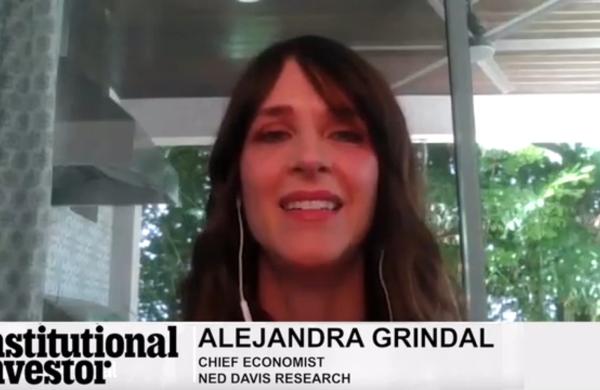Instant messaging on Wall Street; still incubating at Mellon; and more.
By Steven Brull and Jeffrey Kutler
June 2002
Institutional Investor Magazine
Sony's BankStation
It seems only fitting that a Web site operated by SonyBank, moneykit.net, bears a striking resemblance to a Monopoly game, with icons representing various services arrayed along the outside of the rectangular screen. "We didn't have Monopoly in mind , it just came out that way," says Hiroki Totoki, the bank's director of sales, marketing and Web design. But the bank's intentions are clear: It wants to build a brand in financial services akin to what PlayStation is in electronic gaming.
The Sony Corp. unit hasn't had much of an impact on Japan's financial scene since it opened in June 2001. Through March it had attracted some 90,000 customer accounts with deposits worth $770 million , barely a blip next to the $1 trillion-plus balance sheets of the country's biggest banks.
But Totoki says that Sony's near-term goals are modest , breakeven in 2004 and 600,000 accounts by 2006 , and it's no copycat of Japan's stodgy, full-service branch banks. Sony stresses wealth management over low-margin transaction services, and it is counting on a sea change in the public's historically passive approach to personal savings. "The Japanese are deficient in taking self-responsibility. In the future we'll have to take on more of our own risk," explains Totoki.
With offices near Roppongi, a Tokyo neighborhood known more for late-night carousing , and lower rents , than the button-down Marunouchi financial district, SonyBank pays higher rates on deposits than competitors do. Among its online tools is a system assembled by J.P. Morgan Chase & Co. , which owns 4 percent of SonyBank , that suggests an optimal combination of mutual funds based on a customer's financial goals. But ultimately banking is part of a broader e-commerce gambit. "The basic idea is to connect Sony hardware with content and financial services," says Totoki. It may just take a few years for this game to play out.
Pride of Place
When it started Mellon Lab in late 2000, Pittsburgh-based Mellon Financial Corp. took pains to be clear about what it was not: not another E-Citi, the division where Citigroup centralized its Internet initiatives in the late 1990s; and not another LabMorgan, J.P. Morgan Chase & Co.'s technology investor-incubator.
At the time, the dot-com boom was history. Citigroup was already scaling back E-Citi and dispersing its activities among conventional business lines. LabMorgan, despite having spawned going concerns like market analytics firm RiskMetrics Group and bond-trading platform MarketAxess, would not survive 2001. Its functions have been absorbed by the J.P. Morgan Partners venture capital group.
But Mellon Lab is still in business, attempting to nurture and develop start-ups closely related to its parent's core investment management activities. The lab is relatively pint-size , with a staff of ten, compared with LabMorgan's 300 and E-Citi's 1,500 , and so is its agenda. With $4 billion in revenues last year, Mellon could hardly match the technology spending power of J.P. Morgan, which had revenues of $50 billion, or Citigroup, with $112 billion.
"Our timing was perfect. It was impossible for us to make big mistakes," says a wry Mellon Lab president Janey Place, who has also been Mellon Financial's executive vice president of e-commerce strategy since May 1999.
No big mistakes, but not much in the way of creativity, either , until about three months ago, when Place's unit took credit for a strategic alliance between Mellon and Vinings Management Corp., an Atlanta-based consulting firm specializing in nonqualified benefit plans and taxable trusts. The companies are now approaching plan sponsors with an integrated package: Vinings's financial analysis and administrative services combined with Mellon's trust and custody, asset management, human resources and compensation consulting expertise.
"That was our first external launch, and it's not huge," Place declares. But now it's better to be modest and deliberate than costly and reckless. "The lab mission has been morphing for changing times," she says.
All told, Mellon Lab has taken only four projects past the idea stage and has implemented just two , the Vinings alliance and an even-lower-profile internal launch of a pension services product. "We don't expect another major launch in the next month or two," Place advises.
Instant communicator
While instant messaging was taking the Internet by storm , and forcing many banks and brokerages to fit that service into their online retail offerings , Leo Schlinkert was quietly getting it done on the institutional side. Schlinkert,s company, Communicator, came out in April with IM Hub, already in place at eight top investment banks, with 30,000 of their people signed on. The system is designed especially for bankers, portfolio managers, research analysts and clients; they can hold ad hoc electronic meetings or morning calls, share reports and documents, conduct one-on-one conversations or make general broadcasts to others in the IM Hub directory.
"This is a breakthrough for instant messaging and for the institutional securities industry," boasts Schlinkert, 43, a former Salomon Brothers corporate bond chief who founded White Plains, New York,based Communicator in 1999 to operate the commingled research and underwriting databases Bond.Hub and SyndicateHub. The technical infrastructure for those sites , including systems for user sign-on and authentication and for governing participants, permissions to access any piece of online data , forms the basis of IM Hub. "We've been doing identity management and content aggregation since 1999," explains Schlinkert. "Messaging is a logical next step."
IM Hub began mainly in the fixed-income departments of Bond.Hub participants like Citigroup, J.P. Morgan Chase & Co. and UBS Warburg. As he branches out into equities and municipal finance, Schlinkert expects the IM Hub population to exceed 100,000. That's small compared to the estimated 50 million to 60 million Americans , from teenagers on America Online "buddy lists" to securities lawyers compiling offering documents , who have flocked to IM in recent years. But Schlinkert describes IM Hub as "the largest corporate multienterprise IM service," and one that addresses security and reliability concerns in ways that free consumer services do not.
IM Hub is by no means alone. Bloomberg terminals offer a messaging feature, but it,s available only to that network's subscribers. Reuters is about two months away from launching a system that it co-developed with Microsoft Corp.; like IM Hub it is based on standard Internet technology.
"We're responding to customers' desire for choice and openness," asserts Lewis Knopf, Reuters' managing director of collaboration services. "People recognize that they can,t control free IM." He adds that all platforms, free and not, could eventually be compatible through interoperability agreements. In the meantime, says Knopf, "we need to provide a way for firms to migrate from free services , you don't want to suddenly turn things off between the buy and sell side."
Separate ambitions
If it's good enough for David Pottruck and Christos Cotsakos, then it might be worth a shot by Erik Davidson and Kevin Freeman too. Just as Charles Schwab Corp. co-CEO Pottruck and E*Trade Group CEO Cotsakos penned books (Clicks and Mortar and It's Your Money) to add physical weight to their virtual fame as online brokerage innovators, Davidson and Freeman, relative unknowns, are trying to live a crossover dream of their own.
For Davidson and Freeman, co-founders of Carmel, California, based Separate Account Solutions, it is not enough to be peddling technology that poses a competitive threat to mutual funds. To spread the word about separately managed accounts , which they and a growing number of financial advisers see as far more cost- and tax-efficient than the more rigid selections and strategies of mutual funds , the pair co-wrote Investing in Separate Accounts, published in April by McGraw-Hill. If the book calls attention to their company, so much the better, but SAS sells directly to large financial institutions like Canada's RBC Financial Group, an SAS financial backer and its first major customer. As writers, Davidson and Freeman are wearing their consumer-educator hats.
"We searched Amazon.com and found 550 titles about mutual funds but not one about separate accounts," recalls Freeman, 41, who a decade ago founded Templeton Portfolio Advisory, now the Franklin Templeton Investments private client group. In the late 1990s he and Davidson, a 40-year-old former investment banker who joined Freeman's advisory unit in 1996, formulated the business plan for SAS, which they launched in 2000.
Though they title their first chapter "They Shoot Mutual Funds, Don't They?" they don't want to completely kill them off. "There will always be a place for mutual funds; I can't imagine a $500 separate account," says Freeman. But he and Davidson , SAS's chairman and president, respectively , concede that their campaign has a long way to go, and they are under no illusions that they will get rich as first-time authors. Says Davidson: "You,ll know we've arrived when there is a yellow-jacketed book in the stores: Separate Accounts for Dummies."





